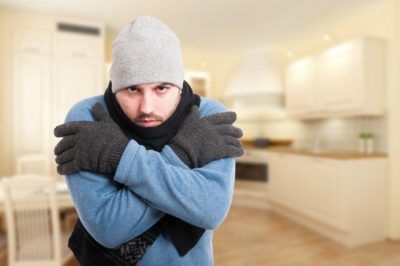BLOG
6 Reasons Your Furnace Blows Cold Air
 There are few things more uncomfortable than being too cold or too hot. Paying for heating and cooling that does not work efficiently is never fun, and it’s particularly frustrating when the service completely quits during the dead of winter.
There are few things more uncomfortable than being too cold or too hot. Paying for heating and cooling that does not work efficiently is never fun, and it’s particularly frustrating when the service completely quits during the dead of winter.
If your furnace is blowing cold air instead of hot air, be patient. It could be that it just needs to warm up. Much like the heating system in your car takes a few minutes to switch from cold air to warm air, your furnace needs a little time to get going.
If your furnace continues to blow cold air after some time has passed, you might need to call a professional for troubleshooting. Before you can repair the problem, you must diagnose it.
Here are 6 reasons your furnace might be blowing cold air.
1. The thermostat is on the wrong setting.
This seems obvious, but many people run their furnace and forget to check their thermostat. If your thermostat is set to “on,” then your furnace fan will constantly blow air, even when the home is already heated. Changing your thermostat to the right setting will keep the fan from blowing cool air unnecessarily.
2. You need to clean your flame sensor.
Burners keep a furnace hot. If you have a dirty sensor, the burner will often go out. This, in turn, cools the air being funneled through. Ensure that you are cleaning the flame sensor thoroughly and regularly.
3. Your pilot light has gone out.
Likewise, if your pilot light has gone out, the furnace will blow cold air. You can relight your pilot light yourself; however, if it won’t stay lit, it could be that there is a deeper underlying problem. Feel free to call a professional for advice or assistance.
4. The air filter is dirty.
Dirty air filters restrict airflow, which causes your furnace to work harder to heat your home. The harder your furnace is working, the higher chance it has of overheating, which results in cold air. To ensure maximum efficiency, be certain that you are changing or cleaning your air filter as often as necessary.
5. One of the safeties has tripped.
The problem could be a faulty circuit or wiring. If a safety has tripped, call your HVAC technician and ask for professional assistance.
6. Other technical problems.
If none of the above is the problem, then it is probably time to call in a professional. If the problem is technical, there won’t be much you can do to fix it yourself. Your best course of action is to have the unit inspected and determine if you need a repair or replacement.



